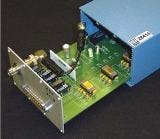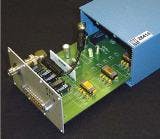Due to LED manufacturing processes, individual LEDs vary in lumen output. When placed into a luminaire and/or an array, the sum of the individual LED lumens (as modified by the luminaire components) becomes the cumulative light output of that luminaire. Relative photometry prorates test results against self-certified bare-lamp rated lumens. It uses mathematical calculations to remove the differences in the output of the bare lamp(s). Absolute photometry records the actual intensity levels during the test, such that the manufactured differences among LEDs are tested as they performed on the day of testing, in the sample fixture.
++++++
This article was published in the July/August 2010 issue of LEDs Magazine. To read the full version of this article, please visit our magazine page, where you can download FREE electronic PDF versions of all issues of LEDs Magazine. You can also request a print copy of LEDs Magazine (available by paid subscription) and sign up for our free weekly email newsletter.






